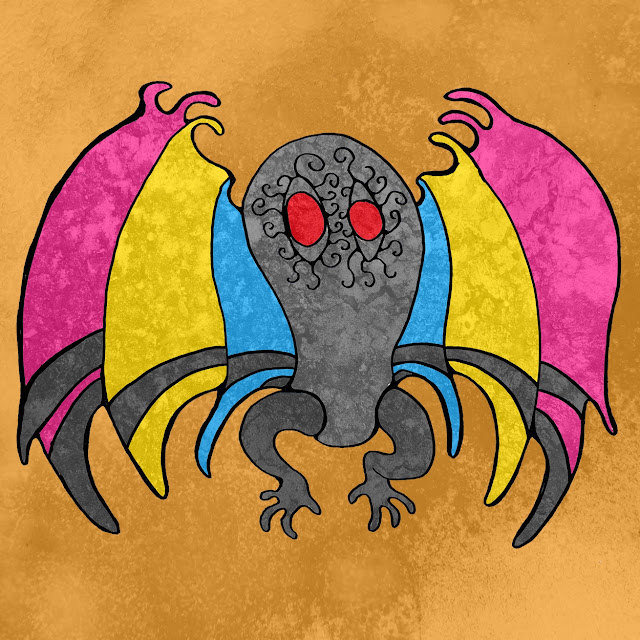On a late evening in 1956 “Mr. Hanks” (a pseudonym used by the witness to protect his identity) was traveling down a rural lane near Falls City, Nebraska when a being out of a hypnogogic hallucination sailed over his head. The creature, so Mr. Hanks claimed, was held aloft by fifteen-foot-long metallic wings covered in multicolored lights. These wings remained rigid, yet the being appeared to somehow be guiding its flight with a control panel strapped to its chest. One might naturally conclude that this apparition was just some eccentric human inventor testing a new glider. But then what does one make of Mr. Hank’s description of the entity’s twisted, leathery demonic face and nine-foot height? Though the encounter was brief- the entity flew overhead and disappeared into the dusk in only a few seconds- it would leave Mr. Hanks deeply shaken.
This was not the first recorded encounter with strange,
technology-assisted flying humanoids in modern times. In 1948 Bernice Zaikowski from Chehalis,
Washington also claimed to have witnessed a man gliding above her house on a
pair of giant, unmoving metallic wings. That same year, several people in Longview
Washington reported three men in “flying suits” sailing through the air with
the aid of unseen motorized equipment.
Going even further back to 1880, visitors to New York’s
Coney Island witnessed a man with “bat’s wings and improved frog’s legs” and a
“cruel and determined expression” sailing over the amusement park.
What could these bizarre, mechanically-assisted flying
humanoids be? Perhaps, as some have suggested, they were aeronaut inventors
testing out novel glider technology. The idea is not unprecedented. In the late
1800s German engineer Otto Lilienthal made extensive studies on the physics of
wings (his data served as inspiration for the earliest test flights of the
Wright brothers) and even built several gliders that he personally flew. Follow-ups
on the Chehalis sighting strongly suggest that what Ms. Zaikowski saw was just such
a man in a hang glider.
SOURCES:
Encounters With Flying Humanoids by Ken Gerhard
An article from Cryptomundo providing a mundane explanation for the Chehalis winged man
An account of the Coney Island Flying Man
An account from Untapped New York about the Coney Island flying man
















